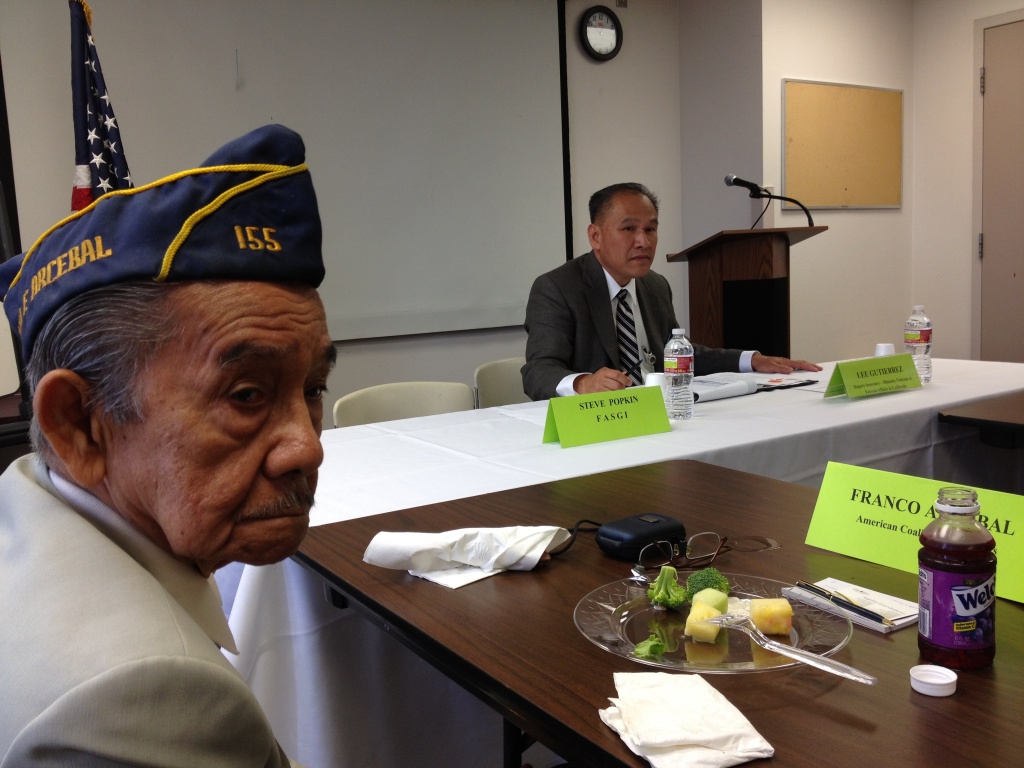The details in a newly issued report on the disparities within California's Asian American population are an eye-opening antidote to the "model minority" myth. They depict a diverse population that's deeply divided along lines of social class, educational attainment, language and more.
Based on census and other federal data, the report from the Asian Pacific American Legal Center tracks Asians Americans in several regions including Southern California, home to the largest population of Asian Americans in the state.
A few basics: As it's been reported lately, immigration from Asian countries to California now exceeds that from Latin America. Accordingly, the state's general Asian and Pacific Islander population has been on the rise. Between 2000 and 2010, the Asian American population of California grew 34 percent, followed by its Native Hawaiian and Pacific Islander population at 29 percent. Both surpassed the growth of the Latino population.
Who exactly accounts for this population growth? In Southern California, the fastest-growing group is Bangladeshis, followed by Fijians, Pakistanis, Sri Lankans and Indians.
Where does the growing Asian American population live? While growth in Los Angeles County and Orange Counties has been modest, the Inland Empire's Asian American population exploded between 2000 and 2010, by 126 percent in Riverside County and by nearly 60 percent in neighboring San Bernardino County.
More highlights from the report:
- Nearly 60 percent of the Asian Americans in California are foreign-born, but their citizenship rates vary. In Southern California, Vietnamese Americans are the most likely among the foreign born to become naturalized citizens; the least likely are Japanese Americans. Tongans, Sri Lankans and Indonesians are also near the bottom in terms of citizenship, nearly on par with Latinos, whose citizenship rate is lower.
- English proficiency is an issue for many Asian American groups, more so than for Latinos. While groups whose histories tie them to the United States - Guamanian, Samoan, Filipino, Japanese - are in general more proficient in English than the general population, more than half the Vietnamese, Korean and Burmese American populations in the state are limited in their English skills.
- Educational attainment, along with economic success, is one of the main components of the model minority myth. High educational attainment beyond that of whites is a reality for Japanese, Taiwanese and Filipino Americans in Southern California. But other groups - Laotian, Vietnamese, Hmong and Cambodian - lag behind the general population, and are the least likely among Asian Amerians to earn high school diplomas.
- In terms of income, certain Asian American groups in Southern California fare worse than blacks and Latinos. Tongans, Bangladeshis and Cambodians have the lowest incomes. About 32 percent of Tongan Americans in the region live in poverty, the repor sayst; 27 percent of the region's Cambodian American children live in poverty, a higher rate than in any other racial group. Meanwhile, in general, Japanese, Filipino and Indian Americans in Southern California are more likely enjoy income levels beyond that of whites.
- Another surprise is that only Taiwanese Americans own homes at rates higher than whites in Southern California; meanwhile, even relatively successful Korean Americans are less likely to own homes than Latinos in the region.
- In terms of medical insurance, Korean Americans fare the worst, with more than 30 percent of this group in Southern California likely to be uninsured, on par with Latinos. In reverse, Japanese Americans in the region are more likely to have health insurance than whites.
There are no specifics related to illegal immigration for Southern California, but overall, it's estimated that there were 1.3 million undocumented Asian Americans in the United States in 2011. This translates to about 416,000 undocumented Asian Americans in California, about 15 percent of the state's undocumented population.
As far as voting power goes, Asian Americans voted in larger numbers than ever in the November election. Between 2000 and 2008, the number of Asian American registered voters in California grew 51 percent, a rate second only to that of Latinos.
Find the entire report here.














